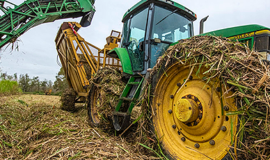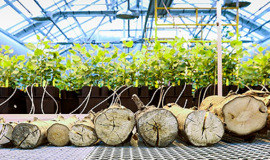Biomass Energy Explained
Even though solar and wind energy are all the rage right now, there are other energy sources that promise great potential. Many consider that energy from biomass seems promising as an alternative energy source.
Biomass energy is the renewable energy that comes from plants and animals. Up until the late 1800s biomass was the leading energy source in the production of electricity. Nowadays, biomass continues to be used in many countries. For example, 50% of the electricity production in India comes from biomass, in China 33%, in Brazil 25% and in Kenya up to 75%. Some of the industrialized countries also produce energy from biomass, such as Finland (18%), Sweden (9%) and USA (3%).
Biomass energy comes with certain advantages ad disadvantages. Some of the advantages of biomass are:
– It is a renewable source of energy
A lot of biomass fuels can be replenished after their use. Wood and plants can easily be regrown and as long as efforts are made to maintain the resources used for biomass energy, it is a source that has the potential to outlast fossil fuels by far.
– Carbon neutrality
Biomass reduces the carbon print because the fuel is a natural part of the carbon cycle, unlike oil and other fossil fuels.
– Availability
Like solar and wind energy, biomass resources can be found anywhere on the planet. Their abundance means that we will not run into challenges like we do with fossil fuels.
– Low cost compared to fossil fuels
The costs related to getting biomass resources is relatively low compared to drilling for oil or creating gas pipelines.
On the other hand, some of the disadvantages of biomass energy are:
– High space requirements
Biomass power plants require a lot of space, which limits the use of this energy. A lot of times, biomass plants are constructed closely to the source of the biomass fuels, so that they can reduce transportation and storage costs.
– Environmental impacts
Although biomass energy is considered an environmentally-friendly alternative to coal, the electricity production from biomass does release pollutants in the air, such as carbon dioxide, nitrogen oxides and other pollutants.
Which resources can be considered to use as biomass?
Biomass resources include wood and wood processing wastes such as wood pellets and wood chips, lumber and furniture mill sawdust, agricultural crops and waste materials such as soybeans, corn, sugar cane, algae and woody plants, materials like cotton, wool and food, and also animal manure and human sewage is also used.
How is biomass converted into energy?
There are several ways with which biomass is converted into energy:
– Direct combustion (burning) to produce heat
This is the most common method for converting biomass into energy. Biomass is burnt directly for heating in buildings and industrial objects, and for generating electricity with steam turbines.
– Thermochemical conversion
Thermochemical conversion includes pyrolysis and gasification. Biomass pyrolysis produces fuels like charcoal, bio-oil, renewable diesel, methane, and hydrogen. Gasification is used for producing carbon monoxide and hydrogen rich gas called synthesis gas or syngas. Syngas is used for heating or generating electricity with steam turbines.
– Chemical conversion
Through chemical conversion, biomass is converted into acid methyl esters which are used to produce biodiesel.
– Biological conversion
Biological conversion is implemented for the production of liquid and gaseous fuels. Ethanol is used as a vehicle fuel. Renewable natural gas—also called biogas or biomethane—is produced in anaerobic digesters at sewage treatment plants





